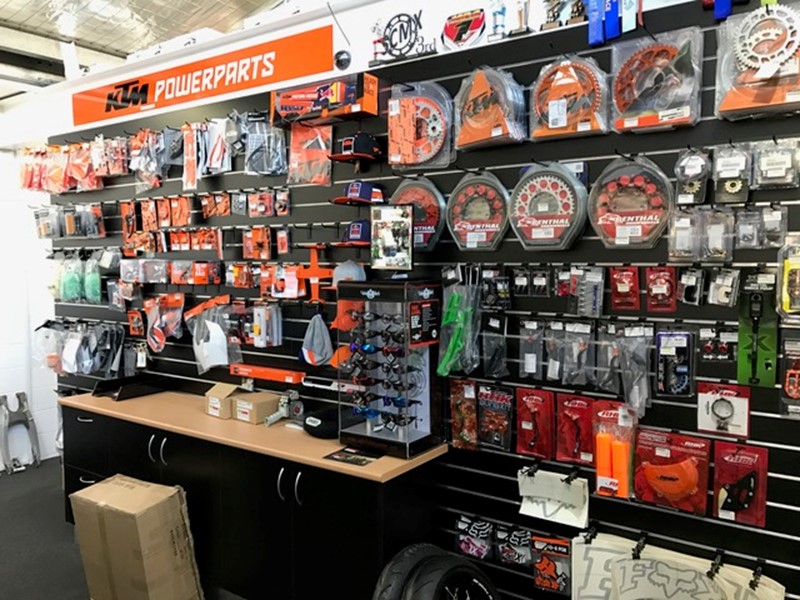Vital Motorcycle Parts NZ for Peak Performance and Security
Wiki Article
Recognizing the Necessary Components of a Bike: A Comprehensive Guide for Fanatics
For motorbike fanatics looking to elevate their riding experience and ensure their bikes run efficiently, recognizing the crucial elements of a motorcycle is paramount. Each element, from the engine's elaborate workings to the vital duty of the braking devices, not only affects efficiency however additionally safety and comfort. This overview will certainly go through the essential parts that every biker ought to be familiar with, allowing notified choices in both maintenance and prospective upgrades. As we start this exploration, one must ask: just how does each element communicate to produce the smooth trip every enthusiast looks for?Engine Components

The camshaft plays an essential duty in regulating the timing of the engine's shutoffs, guaranteeing the specific opening and closing needed for reliable gas and air intake, as well as exhaust expulsion. This timing is critical to preserving optimal engine efficiency and effectiveness. Additionally, the carburetor or gas shot system, depending upon the bike model, is in charge of blending air with fuel in the appropriate proportion for burning.
The air conditioning system, either air or liquid-based, functions to maintain the engine's temperature within functional restrictions, avoiding getting too hot and making certain longevity - motox parts nz. Each component, thoroughly made and incorporated, adds to the seamless operation of the engine, specifying the motorbike's power outcome and total efficiency
Transmission System
Indispensable to the motorcycle's capability, the transmission system guarantees reliable power transfer from the engine to the wheels. This system comprises several critical components, including the clutch, gearbox, and final drive, each playing a crucial function in converting the engine's power right into movement. The clutch, generally operated by a hand lever, serves to disengage the engine and involve from the transmission, permitting for smooth equipment adjustments and regulated velocity.The gearbox, typically described as the transmission correct, has a collection of gears that motorcyclists can manually move via to readjust the bike's rate and torque outcome. These equipments are arranged in a series that makes it possible for the motorbike to speed up smoothly and maintain optimum engine efficiency across various rates. A lot of motorcycles utilize a consecutive transmission, needing the biker to shift gears in a predetermined order.
Braking Devices
While comprehending the transmission system is essential to utilizing a motorcycle's power, just as crucial is the capability to control and quit that power properly, which is where braking mechanisms enter play. Brakes are vital for security and performance, supplying the biker with the essential control to browse various surfaces and conditions. view Typically, bikes feature 2 types of stopping systems: disc brakes and drum brakes.Disc brakes are a lot more prevalent in modern-day motorbikes due to their remarkable performance. They include a brake disc, caliper, and pads. When triggered, the caliper squeezes the brake pads against the rotating disc, transforming kinetic energy into warm, thereby reducing the wheel. This system offers better warmth dissipation, constant efficiency, and enhanced stopping power, specifically in wet problems.
Alternatively, drum brakes, though less typical, are still discovered in some bikes. They work by pressing brake shoes against the inner surface area of a drum affixed to the wheel. While generally less efficient in warm dissipation and quiting power, drum brakes are less complex and more economical.
Understanding these braking systems' subtleties permits riders to maintain their motorcycles correctly and appreciate the engineering that guarantees risk-free and reliable quiting.
Suspension and Guiding
Suspension and guiding systems are crucial elements that dramatically affect a motorcycle's handling and ride comfort. The suspension system, containing forks at the front and shock absorbers at the back, takes in roadway irregularities, boosting stability and control. Front forks, usually telescopic or upside down, compress and rebound to alleviate effects, while rear shock absorbers maintain tire call with the roadway, vital for grip and security.Steering, centered around the handlebars, attaches the cyclist to the bike's directional control. The steering head bearings make sure smooth procedure, enabling precise maneuverability. Correct positioning and maintenance of these bearings are essential for predictable guiding action and decreasing rider exhaustion.
The suspension's adjustability is an additional vital element; preload, damping, and rebound settings enable personalization to suit numerous riding problems and styles. This flexibility is essential for optimizing efficiency, whether navigating metropolitan motorcycle accessories shop roads or tackling rugged tracks. Advancements like digital suspension systems supply real-time changes, improving trip quality throughout varied terrains.

Electric Solutions
After ensuring a smooth and regulated experience with efficient suspension and guiding systems, attention turns to the electric systems, a critical facet of modern motorbikes. These systems play an essential duty not just in starting the engine yet also in powering different parts that enhance the performance and safety and security of the bike.site here At the heart of a motorcycle's electrical system is the battery, which shops electric power required for starting the engine and powering complementary systems - motocross gear. The generator or generator, coupled with the rectifier-regulator, guarantees the battery stays billed while the bike is in operation, converting mechanical energy into electric power and keeping voltage degrees
The ignition system, an additional critical element, is in charge of stiring up the air-fuel mixture in the engine's cylinders. Modern motorcycles typically use a digital ignition system, supplying greater efficiency and dependability contrasted to typical systems.
Lights systems, including fronts lights, tail lights, and indications, are additionally vital, guaranteeing visibility and safety for the rider. Extra digital parts such as sensors, control devices, and displays add to innovative functions like gas shot management, anti-lock stopping systems (ABS), and digital dashboards, additionally boosting the riding experience.
Final Thought
An extensive comprehension of a bike's essential elements, consisting of the engine, transmission system, braking systems, suspension, guiding, and electric systems, is essential for enthusiasts aiming to optimize comfort, safety and security, and performance. Proficiency of these aspects enables for informed decisions regarding upkeep and upgrades, inevitably improving the riding experience. By incorporating this understanding, cyclists can ensure their motorbikes operate at peak performance and integrity, consequently maximizing both satisfaction and longevity of their automobiles.For motorcycle lovers looking to boost their riding experience and guarantee their bikes run smoothly, comprehending the important elements of a motorcycle is critical.Essential to the motorcycle's performance, the transmission system makes sure efficient power transfer from the engine to the wheels.While understanding the transmission system is key to utilizing a motorbike's power, just as essential is the ability to manage and stop that power efficiently, which is where braking mechanisms come right into play. Commonly, motorbikes include two types of braking systems: disc brakes and drum brakes.
A comprehensive understanding of a motorbike's necessary parts, including the engine, transmission system, braking devices, suspension, steering, and electric systems, is important for fanatics intending to optimize convenience, safety, and performance.
Report this wiki page